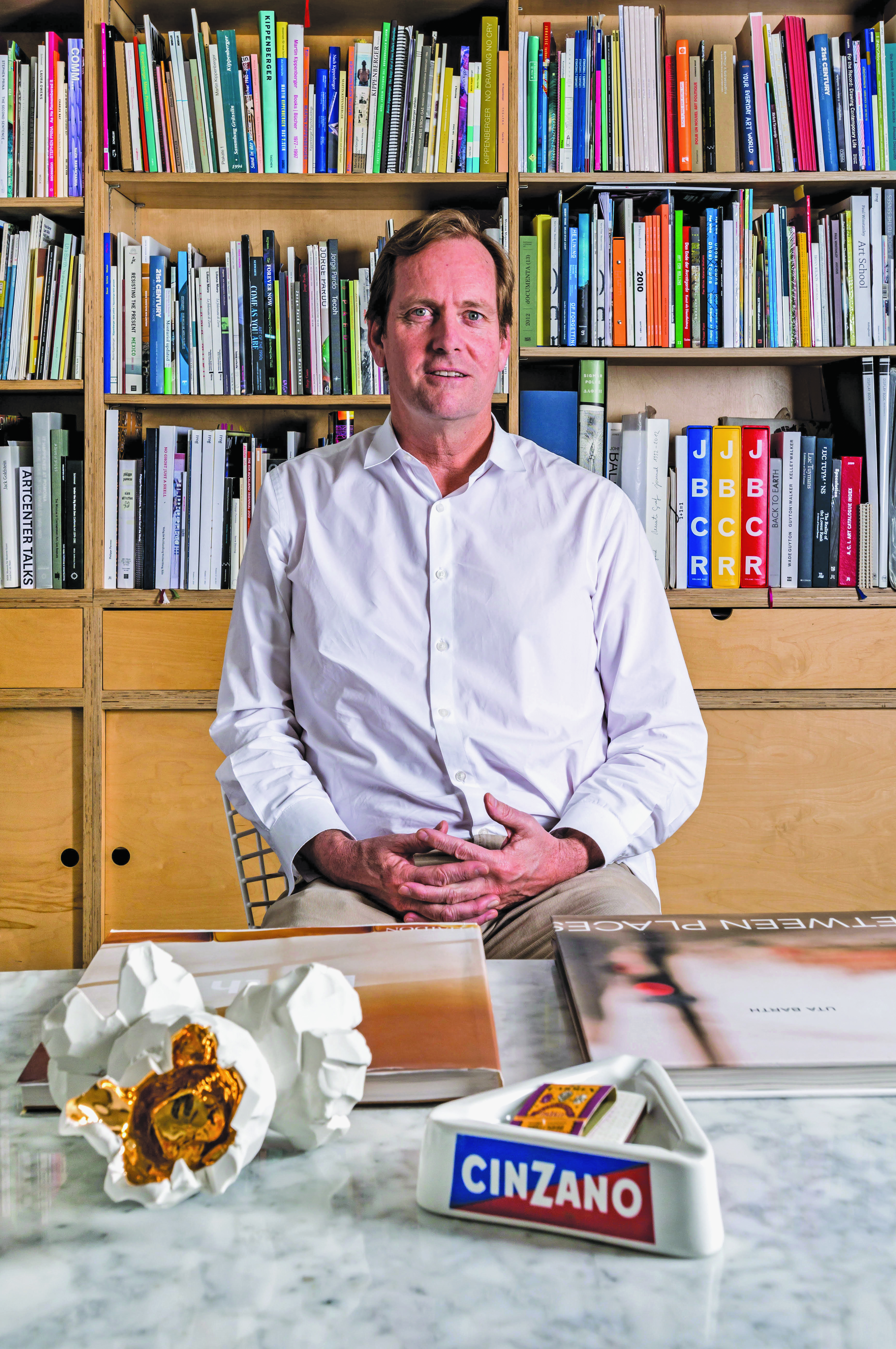
Brian Butler, the owner of 1301PE, holds back on nothing for our two-hour interview. He’s held a prime vantage point for more than two decades and we touch on subjects like how in the past few years, big galleries have tried to control artists the same way Monsanto controls seeds (choosing monoculture over biodiversity); how our culture wants “the Harry Potter box set” of a particular artist’s works (the finished story, instead of waiting to see how it develops) and how the gallery opened 25 years ago on the inauspicious day that the L.A. Riots began.
“We sat around for a couple of days with nobody coming to see the exhibition,” Butler says, reminiscing back to the inaugural Ericson & Ziegler show in April, 1992.
A native of Palos Verdes on the South Bay of Los Angeles, Butler studied art history at Berkeley before cutting his teeth at the legendary Asher Faure Gallery in the late-‘80s. After curating a show there, the late Burnett Miller came calling, and made him a director of his gallery on La Brea (and was also involved with the joint venture in Cologne, Miller-Nordenhake). But then the recession hit, and after being let go he set out to start his own gallery.
Butler moved into his first space in a townhouse at 1301 Franklin Street in Santa Monica, opening the Ericson & Ziegler show first, and then early shows by Diana Thater, Rirkrit Tiravanija and Meg Cranston. He moved to the Mid-Wilshire area down the street from LACMA in 1997, and over the years has presented shows by Fiona Banner, Jorge Pardo, Jason Rhoades, Pae White, Jessica Stockholder and Uta Barth, whose introspective exhibition of photographs referencing Gorgio Morandi still-life paintings hangs in the gallery as we spoke.

“I would say 1301 PE is about ‘art of our time,’” says Butler. “Kirsten Everberg is making paintings and also raising a family. There’s a lot of artists that live their life, and just want to make their work. Those are the people I’m interested in. Kerry Tribe’s making her films. Diana Thater is making her installations, or she’s thinking about a single piece. There’s a fluidity in the conversation, and each artist has their own life, and our gallery’s job is to say, ‘How do we deal with those separate lives?’”
Though the gallery is a quarter-century old, Butler continues to seek out artists who were toddlers when he first opened.
“We just did this show with Petra Cortright, and it’s really interesting because many of the complaints people have about her work are many of the same complaints people had about Pardo, Thater, Pae White and Philippe Parreno,” he explains. “All that they were doing in their 20s and 30s was native to that world around them.”

Butler is keeping the gallery’s landmark year low-key, though he has programmed a show that addresses the anniversary in his own subliminal way.
“We’ll be doing a show called ‘The Last Beautiful Pleasure,’ with Tacita Dean and Manon de Boer. It’s an exhibition about duration. That’s my ‘smoking a cigarette’ moment,” he says, miming an elegant Hollywood star puffing defiantly.
Still, in a fast-paced art world where many doors are closing, 25 years is indeed a milestone. “I think of it more like my 25th birthday,” Butler demurs. “We’re growing up into adolescence; some of us are just a little older now.”



